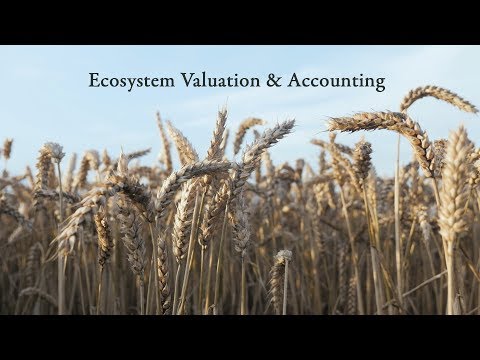How Do You Assess An Ecosystems Health And Vitality?
How To Value And Account For Ecosystems
Keywords searched by users: How do you assess an ecosystem ecosystem services assessment methods, ecosystem services assessment tool, ecosystem assessment, millennium ecosystem assessment, ecosystem assessment pdf, millennium ecosystem assessment 2005 pdf, ecosystem assessment social work, ecosystem assessment tool
What Are The Methods Of Ecosystem Assessment?
Ecosystem assessment, a crucial process for understanding the value and functionality of ecosystems, employs various assessment methods that encompass biophysical, social, and economic dimensions. These diverse assessment approaches are interconnected and each offers distinct insights, all of which are invaluable for informed decision-making.
Biophysical assessments focus on quantifying the physical and ecological aspects of an ecosystem, such as biodiversity, habitat quality, and nutrient cycling. These metrics help us grasp the ecosystem’s health and its capacity to deliver essential services.
Social assessments delve into the human dimension, considering how communities interact with and depend on ecosystems. They examine cultural values, traditional knowledge, and the distribution of benefits and burdens associated with ecosystem services. This perspective is crucial for understanding the intricate relationship between people and nature.
Economic assessments assign monetary values to ecosystem services, allowing decision makers to assess their economic significance. This approach helps in comparing the costs and benefits of different land-use or conservation options, aiding policymakers in making informed choices.
While these assessment methods are interrelated and complement each other, their unique perspectives contribute to a more comprehensive understanding of ecosystems. This holistic view equips decision makers with a broader spectrum of information, empowering them to make well-informed choices that consider both ecological and societal well-being.
What Are The 5 Approaches To Ecosystem Assessment?
Ecosystem assessment involves a comprehensive evaluation of ecological systems to better understand their health and functioning. There are five key approaches that collectively contribute to a holistic assessment of ecosystems, and they are as follows:
-
Scoping: The initial step in ecosystem assessment involves scoping, where researchers define the objectives and boundaries of the assessment. This phase helps in setting clear goals and understanding what aspects of the ecosystem will be evaluated.
-
Indicator Development: Indicators are vital tools for quantifying the state of an ecosystem. During this phase, scientists identify and develop relevant indicators that can measure various ecological attributes, such as biodiversity, water quality, and habitat condition.
-
Risk Analysis: Assessing the risks to an ecosystem is crucial for understanding potential threats and vulnerabilities. Risk analysis involves identifying and evaluating factors that could harm the ecosystem, such as pollution, climate change, or habitat destruction.
-
Management Strategy Evaluation: Once risks are identified, it’s essential to develop strategies for ecosystem management. Management strategy evaluation helps in assessing the effectiveness of different approaches to mitigate risks and enhance ecosystem resilience.
-
Ecosystem Assessment: This is the culminating phase where all the gathered information and data are synthesized to provide a comprehensive evaluation of the ecosystem’s overall health and functioning. It considers the findings from scoping, indicator development, risk analysis, and management strategy evaluation to provide a holistic view of the ecosystem’s status.
These five approaches work together synergistically to provide a thorough understanding of ecosystems, aiding in informed decision-making and sustainable management of natural resources. Figure 1 illustrates the interplay between these approaches in the context of ecosystem assessment, highlighting their interconnected nature in guiding conservation and restoration efforts.
What Is Ecosystem Assessment Tool?
The Ecosystem Assessment Tool is a comprehensive instrument designed to facilitate the analysis of various components within a community’s ecosystem. It accomplishes this by evaluating and assigning rankings to key factors such as existing relationships, current infrastructure, prevailing culture, and available resources. This tool provides a systematic approach for understanding and assessing the overall health and functionality of a given ecosystem, allowing for informed decision-making and targeted interventions where needed. By utilizing this tool, individuals and organizations gain valuable insights into the intricate web of interdependencies that shape their community’s environment. This, in turn, enables them to make more effective and sustainable choices for the betterment of their surroundings.
Update 29 How do you assess an ecosystem
Categories: Update 90 How Do You Assess An Ecosystem
See more here: future-user.com

Ecosystem assessment takes many forms, but most commonly it involves documenting factors that affect the health and functioning of natural ecosystems. This could include documenting how much of an ecosystem type has been converted to intensive land uses; like for agriculture or urban development.Ecosystem service (ES) assessment can be performed by using different assessment methods – biophysical, social or economic. These methods are complementary to each other, but each can provide different set of answers, essential for decision makers.These are scoping, indicator development, risk analysis, management strategy evaluation, and ecosystem assessment (Figure 1). … … development.
Learn more about the topic How do you assess an ecosystem.
- Ecosystem Assessment | NatureServe
- Assessment of ecosystem services – LIFE Viva Grass
- The Five-Step Process of Integrated Ecosystem Assessment
- Ecosystem Assessment Tool – Democracy at Work Institute
- Ecosystem health indicators | Scotland’s environment web
- Three dimensions of biodiversity: New perspectives and methods
See more: https://rausachgiasi.com/your-money blog